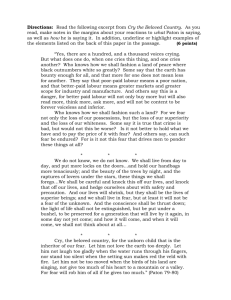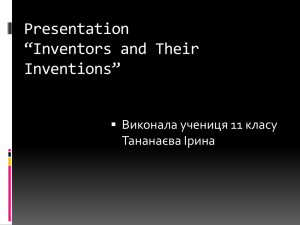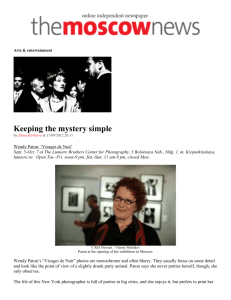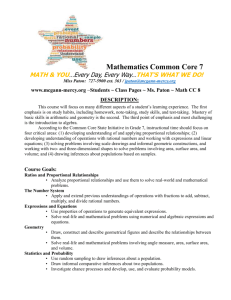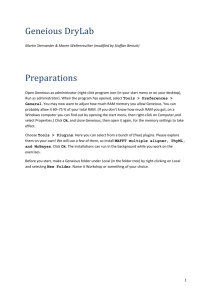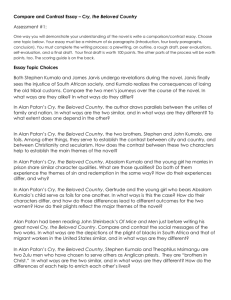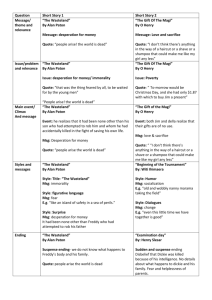Supplementary data
advertisement
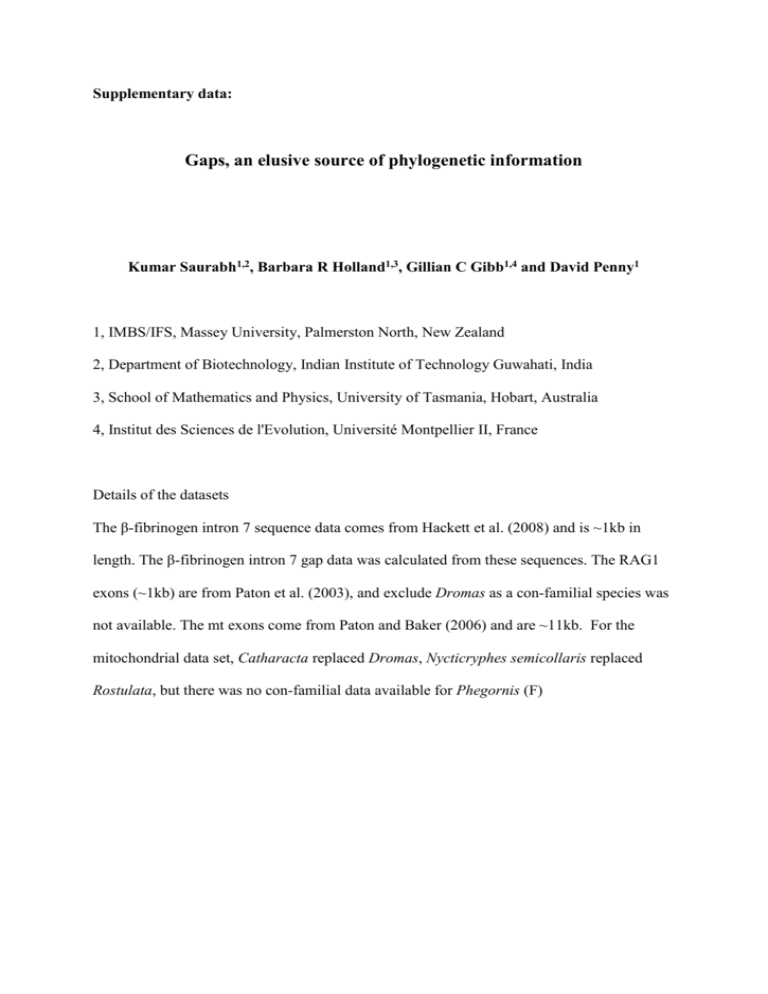
Supplementary data: Gaps, an elusive source of phylogenetic information Kumar Saurabh1,2, Barbara R Holland1,3, Gillian C Gibb1,4 and David Penny1 1, IMBS/IFS, Massey University, Palmerston North, New Zealand 2, Department of Biotechnology, Indian Institute of Technology Guwahati, India 3, School of Mathematics and Physics, University of Tasmania, Hobart, Australia 4, Institut des Sciences de l'Evolution, Université Montpellier II, France Details of the datasets The β-fibrinogen intron 7 sequence data comes from Hackett et al. (2008) and is ~1kb in length. The β-fibrinogen intron 7 gap data was calculated from these sequences. The RAG1 exons (~1kb) are from Paton et al. (2003), and exclude Dromas as a con-familial species was not available. The mt exons come from Paton and Baker (2006) and are ~11kb. For the mitochondrial data set, Catharacta replaced Dromas, Nycticryphes semicollaris replaced Rostulata, but there was no con-familial data available for Phegornis (F) References Drummond A.J., Ashton B., Buxton S., Cheung M., Cooper A., Heled J., Kearse M., Moir R., Stones-Havas S., Sturrock S., Thierer T., Wilson A. 2010. Geneious v5.3, Available from http://www.geneious.com Hackett S.J., Kimball R.T., Reddy S., Bowie R.C.K., Braun E.L., Braun M.J., Chojnowski J.L., Cox W.A., Han K.-L., Harshman J., Huddleston C.J., Marks B.D., Miglia K.J., Moore W.S., Sheldon F.H., Steadman D.W., Witt C.C., Yuri,T. 2008. A phylogenomic study of birds reveals their evolutionary history. Science 320:1763-1768. Paton T.A., Baker A.J. 2006. Sequences from 14 mitochondrial genes provide a well-supported phylogeny of the Charadriiform birds congruent with the nuclear RAG-1 tree. Mol. Phyl. Evol. 39:657-667. Paton T.A., Baker A.J., Groth J.G., Barrowclough G.F. 2003. RAG-1 sequences resolve phylogenetic relationships within Charadriiform birds. Mol. Phylog. Evol. 29: 268-278. Figure S1. Differences in alignments of -fibrinogen intron 7 between MUSCLE, T-Coffee, Clustal and MAFFT for the Scolopaci; graphical representation using Geneious (Drummond et al. 2010). For easier visualisation, the alignment has been stripped of all identical columns and four gaps were manually introduced to align the alignments from different programmes. Pale grey regions represent the consensus, differences are highlighted as red (A), green (T), blue (C) and orange (G). Ambiguities are magenta, and gaps are shown as thin lines in grey (consensus) or black (disagreement)
